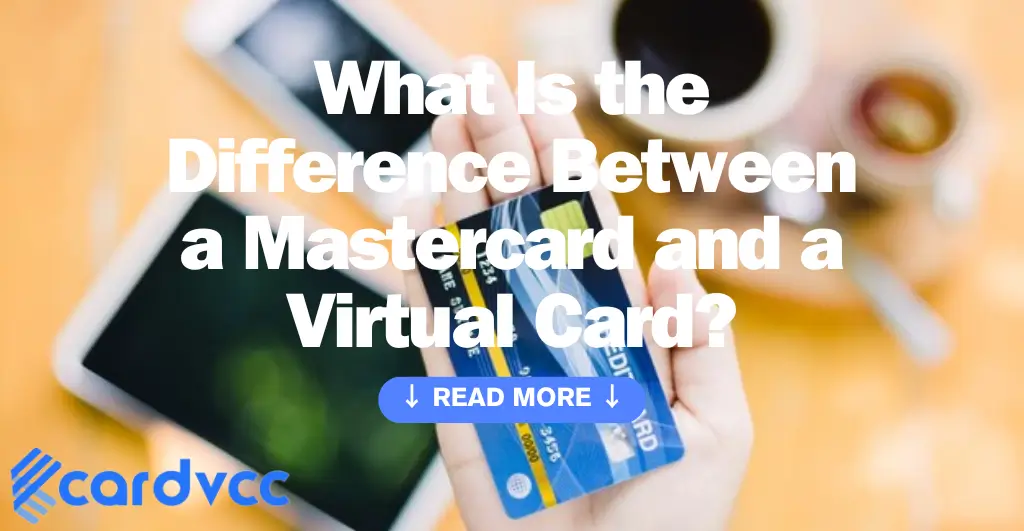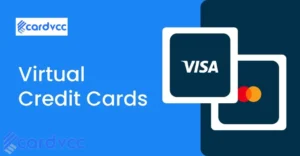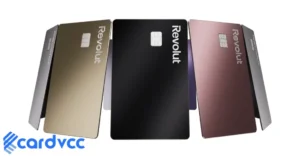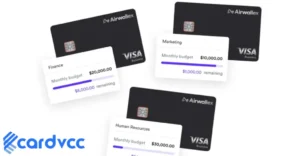A Mastercard is a physical payment card, while a virtual card exists only online. Virtual cards offer enhanced security for online transactions.

Mastercard is a widely accepted physical card used for in-store and online purchases. Virtual cards, on the other hand, are digital and designed for online transactions. They provide a layer of security by masking your actual card details, reducing the risk of fraud.
Virtual cards are ideal for those who frequently shop online or use subscription services. Both types of cards offer benefits, but their usage scenarios differ. Understanding these differences can help you choose the right card for your needs, ensuring convenience and safety in your financial transactions.
What Is A Mastercard?
A Mastercard is a widely recognized payment card issued by financial institutions. It allows users to make purchases in-store or online. Mastercards come with various features and benefits that make transactions easy and secure.
Physical Card Features
A Mastercard is a physical card made of plastic. It typically includes the following elements:
- Card Number: A unique 16-digit number for identification.
- Cardholder Name: The name of the person authorized to use the card.
- Expiration Date: The month and year the card expires.
- Security Code: A three-digit code on the back of the card.
- Chip and Magnetic Strip: For secure, flexible payment options.
Usage And Benefits
Using a Mastercard provides multiple advantages:
- Accepted globally at millions of merchants.
- Enables online shopping with ease.
- Offers rewards and cashback on purchases.
- Provides fraud protection and secure transactions.
- Access to exclusive discounts and offers.
Mastercards can also be linked to digital wallets for added convenience. These benefits make Mastercard a reliable choice for everyday payments.
What Is A Virtual Card?
A virtual card is a digital version of a physical card. It is primarily used for online transactions. Unlike traditional cards, virtual cards do not exist in a physical form. They provide added security and convenience.
Digital Card Features
Virtual cards come with unique features that enhance their usability and security:
- Instant Issuance: Virtual cards are generated instantly online.
- Temporary Numbers: They often use temporary card numbers for transactions.
- Customizable Limits: Set spending limits to control your budget.
- Expiration Dates: Shorter expiration dates for added security.
Usage And Benefits
Virtual cards offer numerous benefits for users:
- Enhanced Security: They protect against fraud and unauthorized use.
- Convenience: Use them easily for online purchases.
- Budget Control: Customizable spending limits help in managing expenses.
- Privacy: They keep your primary card details private.
Virtual cards are perfect for online shoppers. They provide a safe and efficient way to shop online. With these benefits, virtual cards are becoming increasingly popular.
Key Differences
Understanding the key differences between a Mastercard and a virtual card can help you make better financial decisions. Let’s delve into the main distinctions that set these two types of cards apart.
Physical Vs Digital
Mastercard is a physical card made of plastic or metal. It fits in your wallet and you can use it in stores or ATMs. On the other hand, a virtual card is digital. You access it through an app or online platform.
Here’s a quick comparison:
| Aspect | Mastercard | Virtual Card |
|---|---|---|
| Form | Physical | Digital |
| Usage | Stores, ATMs | Online, Apps |
Security Features
Both cards offer unique security features:
- Mastercard has EMV chips and PIN codes for security.
- Virtual cards use tokenization and encryption. These methods protect your card information online.
In case of theft or fraud, the virtual card can be deactivated instantly. This adds an extra layer of protection.
Both cards ensure the safety of your funds. Yet, their methods differ based on their form and usage.
Security Comparison
Security is crucial when choosing between a Mastercard and a Virtual Card. This section will compare their security features.
Fraud Protection
Both Mastercard and Virtual Cards offer strong fraud protection. Mastercard uses advanced technology to detect suspicious activity.
- Mastercard provides Zero Liability Protection.
- Mastercard has 24/7 fraud monitoring.
Virtual Cards have unique features for fraud protection. These features are designed to keep your information safe.
- Virtual Cards use temporary card numbers.
- These numbers expire after a short period.
- This reduces the risk of fraud.
Data Privacy
Data privacy is another important factor. Mastercard follows strict data privacy regulations.
- Mastercard encrypts your data during transactions.
- They comply with global data privacy standards.
Virtual Cards provide enhanced data privacy. They do not reveal your real card number.
- Virtual Cards mask your original card details.
- This adds an extra layer of security.
| Feature | Mastercard | Virtual Card |
|---|---|---|
| Fraud Protection | Zero Liability, 24/7 Monitoring | Temporary Numbers, Short Lifespan |
| Data Privacy | Encrypted Data, Global Standards | Masked Details, Extra Security Layer |

Convenience And Accessibility
Understanding the difference between a Mastercard and a virtual card can help you decide which suits your needs better. Both offer unique benefits, but their convenience and accessibility vary. Let’s explore this further.
Ease Of Use
A Mastercard is widely accepted in physical stores and online. You can swipe, insert, or tap it for payments. It is user-friendly and familiar to most people. You need to carry it with you, though.
A virtual card, on the other hand, exists only in digital form. It offers a seamless online shopping experience. You do not need to carry a physical card. You can use it directly from your smartphone or computer.
Availability
Mastercards are easy to obtain from most banks and credit unions. They are available to almost everyone, including those with limited credit history. You can use them internationally in most places.
Virtual cards are often issued by online banks or financial apps. They are usually linked to your existing bank account. Not all banks offer virtual cards, so availability can vary.
| Feature | Mastercard | Virtual Card |
|---|---|---|
| Physical Presence | Yes | No |
| Online Use | Yes | Yes |
| International Use | Yes | Depends on the issuer |
| Ease of Obtaining | High | Medium |
Both Mastercard and virtual cards provide different levels of convenience and accessibility. Your choice depends on your specific needs and preferences.
Use Cases
Both Mastercards and virtual cards have unique use cases. Understanding these can help you decide which is best for you. This section breaks down the differences in use cases for everyday purchases and online shopping.
Everyday Purchases
Mastercards are physical cards. You can use them in stores, restaurants, and ATMs. They are accepted globally and come with features like contactless payments and rewards programs.
- Use at physical locations.
- Withdraw cash from ATMs
- Earn rewards and cashback
Virtual cards are digital. They are not suitable for physical stores. They are ideal for secure, one-time transactions. You can’t use them at ATMs.
- Not for physical stores
- Single-use for added security
- Not for ATM withdrawals
Online Shopping
Both Mastercards and virtual cards excel in online shopping. They offer security and convenience but in different ways.
Mastercards are versatile. Use them for recurring payments and subscriptions. They offer buyer protection and fraud detection.
- Recurring payments
- Subscriptions
- Buyer protection
- Fraud detection
Virtual cards are safer for one-time purchases. They generate a unique card number for each transaction. This feature minimizes fraud risks.
- One-time purchases
- Unique card numbers
- Minimizes fraud risks
Choosing The Right Card
Choosing between a Mastercard and a Virtual Card can be tricky. Understanding the differences helps make an informed decision.
Factors To Consider
There are several factors to consider when selecting a card. Evaluate these aspects carefully:
- Security: Virtual cards offer better security for online purchases.
- Acceptance: Mastercards are widely accepted at physical stores.
- Fees: Some virtual cards have lower fees compared to physical cards.
- Convenience: Virtual cards are instantly available for use.
- Rewards: Mastercards often come with reward programs.
Personal Preferences
Your personal preferences also play a significant role. Consider the following:
- Do you shop online often? A virtual card may be better for you.
- Do you prefer physical cards? Mastercards are more tangible.
- Do you value rewards? Mastercards often provide points or cashback.
- Do you worry about fraud? Virtual cards offer enhanced security.
- Do you need instant access? Virtual cards can be used immediately after issuance.
| Feature | Mastercard | Virtual Card |
|---|---|---|
| Security | Moderate | High |
| Acceptance | Wide | Limited |
| Fees | Variable | Usually Lower |
| Convenience | Physical Use | Instant Use |
| Rewards | Common | Rare |

Frequently Asked Questions What is the difference between a Mastercard and a virtual card?
What Is A Mastercard?
A Mastercard is a physical credit or debit card issued by banks. It allows you to make purchases in-store or online. Mastercard is widely accepted globally.
What Is A Virtual Card?
A virtual card is a digital version of a credit or debit card. It is used for online transactions. Virtual cards offer enhanced security by using temporary card numbers.
How Do Mastercard And Virtual Cards Differ?
Mastercards are physical cards used in-store and online. Virtual cards are digital and used only online. Both offer different security features.
Can Virtual Cards Replace Mastercards?
Virtual cards can complement but not fully replace Mastercards. They are ideal for online purchases. Mastercards are essential for in-store transactions.
Conclusion
Choosing between a Mastercard and a virtual card depends on your needs. Mastercard offers wide acceptance and physical use. Virtual cards provide enhanced security and online convenience. Both have unique benefits, so consider your priorities. Make an informed decision to enhance your financial experience.







